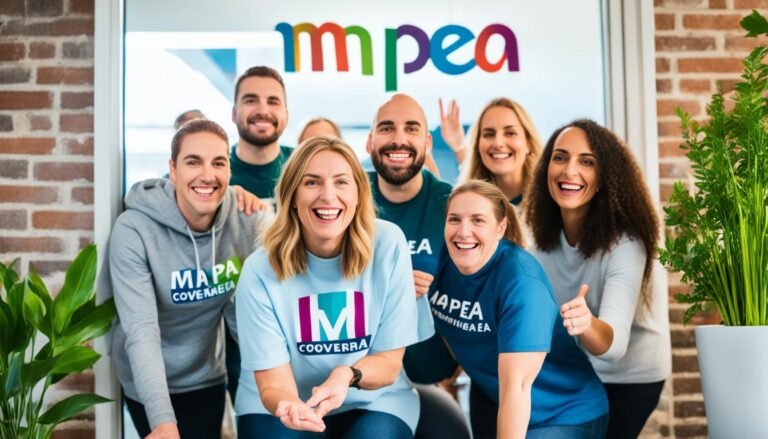Understanding the Civil Monetary Penalties Law
The Civil Monetary Penalties Law (CMPL) plays a big role in healthcare. It has put over $2 billion in fines in place since it started. This big number shows how much the CMPL does and how important it is for healthcare places to follow its rules. The CMPL lets the Office of Inspector General (OIG) give out fines and make sure rules are followed. Keeping to these rules helps keep the American healthcare system good and honest.
At its heart, the CMPL works to keep federal health programs safe from fraud and misuse by giving penalties for doing things that are not allowed. The rules for CMPL are always changing. So, people and groups in healthcare need to keep up with these changes. This helps them stay away from big fines and bad marks on their reputation. The bad effects are more than just losing money. Being seen in a bad light and having your work messed up can hurt a lot, too.
Following CMPL rules is more than just a must-do thing. It’s a big plan that can help shape the future of any healthcare group. By keeping up with changes in CMPL rules and having a strong rule-following plan, healthcare providers can lower the chances of bad things happening. They can keep giving great care to their patients without any problems.
Key Takeaways
- The CMPL has enforced fines exceeding $2 billion, reflecting the law’s significant impact on healthcare compliance.
- Understanding CMPL regulations is crucial for healthcare providers to prevent costly CMPL violations and penalties.
- The OIG plays a vital role in CMPL enforcement, ensuring adherence to CMPL guidelines.
- CMPL compliance not only avoids CMPL fines but also protects the reputation and operational stability of healthcare entities.
- A proactive approach to CMPL regulations can safeguard healthcare organizations against the severe consequences of non-compliance.
Introduction to the Civil Monetary Penalties Law (CMPL)
The Civil Monetary Penalties Law (CMPL) is a key part of enforcing healthcare rules. It ensures that individuals and businesses follow laws to avoid health care fraud and mistakes. This CMPL overview explains the main points and goals of the CMPL. It helps healthcare experts know the law to prevent breaking it.
The Introduction to CMPL teaches about the law’s role in healthcare compliance and its penalties for breaking the rules. The CMPL basics show that it gives the Office of Inspector General (OIG) the power to impose fines. In some cases, it can stop providers from joining Federal health programs if they don’t follow the rules or commit fraud.
The CMPL is more than just a tool for punishment; it helps encourage honesty and responsibility in healthcare.
A key part of the CMPL includes fines for things like sending in false claims, breaking the Anti-Kickback Statute, or not letting OIG see records. The effects of these actions under the CMPL are serious. They can lead to big fines and harm reputations greatly.
Looking further into the CMPL overview, we see it’s not just about individual fraud cases. The CMPL also looks at wrong deals and bribes that could affect medical choices, patient care, and fair competition in healthcare.
- It sets rules for claims and the outcomes of false or misleading claims.
- It imposes fines for illegal kickbacks and bribes.
- It protects against the wrong use and false representation of healthcare providers and services.
The CMPL basics teach and punish. They aim to build a culture of openness and compliance in healthcare. Knowing these parts of the CMPL helps healthcare workers and leaders protect their practices. It shows their commitment to honest work.
In closing, the Introduction to CMPL highlights the need for strict following of healthcare laws. Being committed to these rules is key. It’s about avoiding fines and keeping trust with the people healthcare serves.
The Authority of the Office of Inspector General in CMPL Enforcement
The Office of Inspector General (OIG) has a big role in CMPL enforcement. It ensures rules under the Civil Monetary Penalties Law are followed. By using OIG settlement agreements, the OIG makes sure healthcare follows regulations. It’s important to understand how OIG CMPL authorities work in healthcare.
CMPL enforcement keeps healthcare honest and trustworthy. The OIG can fine, sue, or settle with those who break the rules. Everyone in healthcare must know about CMPL and the OIG’s role to avoid big problems.
The OIG CMPL authorities have rules against fake claims, bribes, and poor care. If someone breaks these rules, the OIG can act to fix the issue or penalize them. Through OIG settlement agreements, problems can be solved without admitting fault. But, there are usually fees to pay and rules to follow afterward.
| Aspect of OIG Authority | Description | Impact on Compliance |
|---|---|---|
| Investigative Powers | The OIG has the authority to investigate potential CMPL violations autonomously. | Healthcare entities are incentivized to maintain rigorous internal audits and compliance programs. |
| Enforcement Options | Authority to impose sanctions, penalties, or pursue litigation for CMPL violations. | Entities may pursue more transparent and ethical operations to avoid punitive actions. |
| Authority to Settle | Ability to enter into settlement agreements with entities to resolve CMPL cases. | Encourages entities to proactively resolve compliance issues before litigation. |
| Mandatory Compliance Programs | OIG can mandate participation in compliance programs as part of settlement agreements. | Enhances long-term adherence to healthcare laws and regulations. |
Healthcare professionals must always follow the rules and be open about their practices. The OIG is serious about stopping CMPL violations. Its choices in handling CMPL issues show its commitment to keeping healthcare fair and honest.
CMPL and Healthcare Fraud: Identifying Common Violations
Healthcare faces a big challenge with CMPL healthcare fraud. It’s growing, despite efforts to stop it. This fraud includes illegal activities under healthcare laws, like the Civil Monetary Penalties Law (CMPL). Some top healthcare fraud violations are breaking drug price reporting requirements and the anti-kickback statute. When providers understand these issues, they can lower risks and follow the rules better.
Federal programs require drug price reporting to get correct price info. Not following this rule, either by mistake or on purpose, can result in big penalties under CMPL. The anti-kickback statute also stops illegal payments that could influence healthcare services. Breaking these laws means fines and damages to reputations.
To help healthcare groups follow the rules, this table compares what’s needed for drug price reporting and the anti-kickback statute:
| Compliance Aspect | Drug Price Reporting Requirements | Anti-Kickback Statute |
|---|---|---|
| Primary Objective | Ensuring accurate and transparent pricing information is disclosed. | Preventing financial rewards for referrals or product prescriptions. |
| Common Violations | – Inaccurate price reporting – Delays in submission – Omission of discounts and rebates |
– Unlawful kickbacks or bribes – Reciprocal referral agreements – Manipulated services or equipment orders |
| Compliance Measures | – Regular audits of drug pricing – Training on reporting protocols – Implementation of compliance software |
– Review and restructuring of compensation models – Regular compliance training sessions – Implementing checks and balances to monitor transactions |
| Potential CMPL Penalties | – Monetary fines – Exclusion from federal programs – Damages and liabilities |
– Civil monetary penalties – Criminal prosecution – Exclusion from federal healthcare programs |
Healthcare providers aim to follow CMPL and promote honesty and ethical behavior. By addressing CMPL healthcare fraud and healthcare fraud violations, we can create a fair and trusted healthcare future.
Understanding CMPL Fines and Penalties
Understanding Civil Monetary Penalties Law (CMPL) is key for healthcare workers. This is because not following the rules can lead to big problems. The goal of CMPL fines is to stop people from breaking healthcare laws. It also keeps healthcare services honest. Knowing about CMP factors, False Claims Act penalties, and how big CMPL penalties can be is very important. This knowledge helps people follow the law and make their places better to work.
CMPL fines can be really big. They depend on what was wrong, how serious it was, if it happened before, and if it was done on purpose. Sometimes, organizations can be fined millions. This shows why having good compliance plans is very important.
The fines from the False Claims Act are also big. They can cost a lot of money and hurt an organization’s reputation. The government takes healthcare fraud very seriously. They do not allow it at all.
When deciding on fines, many things matter. How much harm the violation caused, if someone made money from it, and if they tried to fix it matter. These CMP factors are very important. Everyone in healthcare needs to pay close attention to them.
Following healthcare laws is not just about avoiding trouble. It’s about being professional and ethical. CMPL fines and False Claims Act penalties remind us how important this is.
Staying informed about CMPL helps healthcare groups and workers. They can be more sure of their actions, stay legal, and avoid big problems from not following the laws.
Compliance Requirements Under CMPL Regulations
Following CMPL compliance involves many steps. This includes having accurate pricing information, handling financial relationships correctly, and obeying the Stark Law. Each plays a big role in meeting the rules and keeping healthcare practices safe from legal issues and financial troubles.
A key rule for CMPL compliance is providing accurate pricing information. This means sharing true drug and service costs honestly. It stops misleading practices that could lead to large fines.
In CMPL’s view, healthcare providers must show exact pricing details. This supports fair competition and helps patients make well-informed choices.
Also, financial relationships between healthcare providers and firms like manufacturers or labs need close watch. This helps avoid conflicts of interest or looks of bribery. Both could result in CMPL actions.
- Starting compliance programs to check financial interactions
- Keeping clear records of all agreements
- Doing regular audits to check CMPL standard compliance
The Stark Law is a key part of CMPL compliance. It stops doctors from sending patients to places they have money ties with for certain health services paid by Medicare or Medicaid. There are some exceptions allowed by law.
| Aspect of Compliance | Details | Implications |
|---|---|---|
| Accurate Pricing Information | Mandatory disclosure of true drug and service costs | Prevents fraud and fosters informed patient choices |
| Financial Relationships | Transparent dealings, without conflicts of interest | Eliminates unlawful inducements, ensuring ethical practice |
| Stark Law Adherence | Prohibition on self-referrals to affiliated entities | Maintains unbiased patient care and treatment integrity |
In sum, following CMPL rules is all about combining ethical guidelines and legal requirements. This creates a trusty system for both patients and healthcare providers.
The Legal Threshold for CMPL Violations
Understanding the legal threshold for CMPL violations is crucial for healthcare pros. It’s all about knowing when a mistake crosses the line into CMPL liability. Not everything wrong leads to trouble, but knowing the difference is key.
Proving CMPL violations means showing clear evidence of wrongdoing. It’s not enough to just say something happened. The law needs solid proof. Think about a list that shows different situations and if they count as breaking the rules.
| Scenario | Meets Legal Threshold for Violation | Implications for CMPL Liability |
|---|---|---|
| Failure to report accurate data for drug reimbursements | Yes | Potential for substantial fines and further investigation |
| Inaccurate coding leading to overpayments | Possibly | Depends on evidence of intent or systemic negligence |
| Exclusion violations by employing sanctioned individuals | Yes | Enforceable penalties and risk of exclusion for the entity |
Proving CMPL violations also looks at intent, like ‘knowingness’ or ‘willful neglect.’ A violation really counts if someone knew or should’ve known they were breaking the rules. For CMPL liability, showing a pattern of ignoring rules or not fixing problems quickly is important. Putting money into compliance programs and reviews can help stay on the right side of the law.
Key Provisions of the Anti-Kickback Statute
Healthcare professionals must understand the Anti-Kickback Statute provisions. This knowledge is key to navigating healthcare law. The AKS aims to stop healthcare fraud. It does this by banning payments for patient referrals under federal health programs. The AKS implications are huge for healthcare compliance. They demand constant vigilance and learning to stay in the law’s limits.
It’s wrong to offer, pay, seek, or take any kickback for patient referrals. This is a clear AKS violation. Such acts can lead to big fines, jail, or being banned from federal healthcare programs. Healthcare workers and companies must know what deals could seem like kickbacks.
- Due Diligence: Checking business deals to avoid AKS problems is essential.
- Transparent Agreements: Contracts that are clear and fair reduce AKS risks.
- Education and Training: Keeping everyone informed about Anti-Kickback Statute provisions and rules is key.
Now, let’s look at what’s okay and what’s risky under the AKS:
| Permissible Activity | Questionable Activity |
|---|---|
| Discounts offered to customers that are properly disclosed and reported | Vague ‘consulting fees’ disproportionate to market value services |
| Payments for bona fide employment relationships | Rewards for patient referrals disguised as ‘performance bonuses’ |
| Group purchasing organization (GPO) arrangements with disclosed admin fees | Unaccounted financial incentives for exclusive purchasing agreements |
The line between legal perks and illegal kickbacks can be thin. Strong policies are vital. Healthcare groups must encourage doing the right thing. This protects against AKS implications and keeps medical practices honest.
The damage of ignoring the rules is huge. It hurts trust and the good name of those involved. Knowing the Anti-Kickback Statute provisions deeply is foundational. It helps build solid compliance plans. This lets healthcare pros give great care without fearing legal issues from possible AKS violations.
Consequences of Misuse of Departmental Words and Emblems
The official symbols and terms of the Department of Health and Human Services (HHS) are legally protected. Wrongly using these signs could lead to severe CMPL consequences. This issue is bigger than just following rules; it’s about keeping the public’s trust. Misusing HHS’s symbols could badly damage a health institution’s good name.
Social Security Act prohibitions ban the misuse of HHS’s words and emblems. This act stops misleading actions that might suggest a government link. Such false connections harm the public and could lead to unauthorized use repercussions, like fines and lawsuits. CMPL protects health institutions’ reputations by ensuring accurate and legal representation of ties with HHS.
- Using HHS emblems on unapproved items.
- Hinting at a non-real partnership with HHS on websites or in ads.
- Falsely suggesting federal certification through HHS terms.
Such acts not only trigger CMPL consequences but also weaken public trust in healthcare. Knowing and following the Social Security Act prohibitions is crucial. It keeps healthcare’s reputation solid. The federal government takes the unauthorized use of symbols and words seriously. It shows how important it is for organizations to be careful about their claims of association or endorsement.
Avoiding confusion and lies is especially key in health-related matters. Sticking to these rules is vital for everyone in healthcare marketing and management. This helps prevent unauthorized use repercussions. It also respects the importance of federal icons and language.
Implications of CMPL for Grants, Contracts, and Agreements
It’s key for healthcare groups to understand CMPL implications for grants. Violating CMPL rules can lead to CMPL sanctions like fines or being barred from federal healthcare programs. These sanctions can hurt the group’s reputation and trust levels. So, having bid and proposal integrity protects not only against legal issues but also keeps the group’s name in good standing.
Healthcare providers rely on grants and contracts to keep running and to do research. Governing bodies check closely how these funds are used. It’s key for providers to strictly follow CMPL laws. Bid and proposal integrity is crucial; breaking the rules can lead to CMPL sanctions, risking current and future funding.
To stay on the right path, organizations should take these steps:
- Check grant and contract terms carefully to make sure they match CMPL rules.
- Set up a strong system to check that all laws are followed.
- Teach employees and involved parties about the importance of following CMPL guidance for grants and contracts. Highlight the need for ethical behavior.
- Create a clear way to report any possible breaches of CMPL rules.
Grant and contract managers need to know that CMPL sanctions can impact both the group and individuals. Being accountable for compliance mistakes is a real possibility. Thus, building a culture that values bid and proposal integrity is essential. It’s a basic part of working in the healthcare area.
Conclusion
To sum up our detailed talk, this CMPL ending gathers the important parts of the Civil Monetary Penalties Law. It highlights its big role in healthcare rules. As we went through the detailed rules, how they’re enforced, and how to follow them, it’s clear that knowing CMPL well is key. It’s not just important for healthcare workers—it’s vital for keeping up ethical and legal standards.
The power of the Office of Inspector General and the big fines from CMPL show how crucial it is to follow these laws. They keep the healthcare system honest and trustworthy. Facing big fines and losing a good reputation, it’s clear following the rules is a must, not a choice. This CMPL summary is a guide for healthcare places to stay in line with the law.
This summary is also a push to do the right thing. CMPL affects a lot, from grants and contracts to rules against improper payments. By remembering these key points, healthcare workers can feel sure as they work. They can stay focused on giving the best care while following the law.







